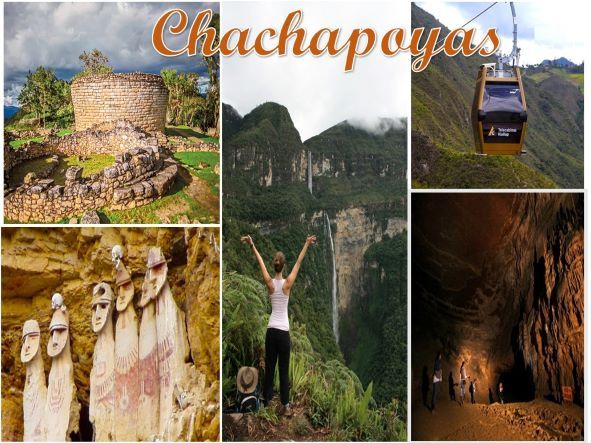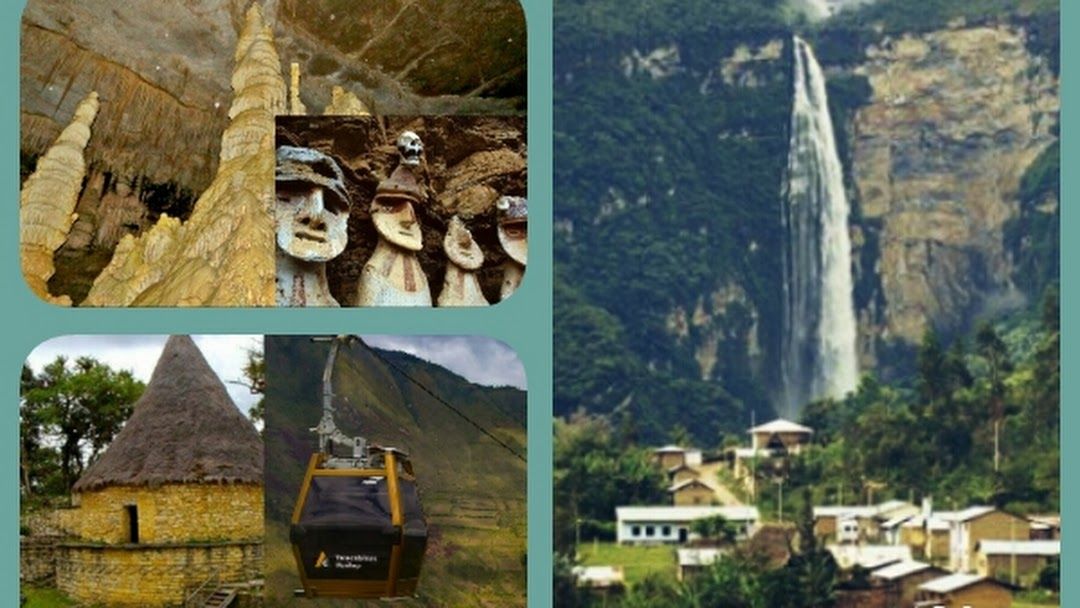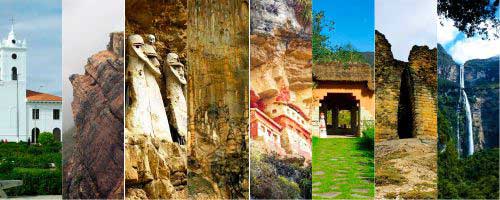Where is located The Quiocta Caves?
The Quiocta Caves are located at 2793 metres above sea level in Lamud, Amazonas, Peru. It was declared Cultural Patrimony of the Nation. The caverns have a length of 600 meters, in its interior we can see cave images and remains of ceramics, utensils and bones. It is located exactly 10 kilometres from Lámud.
About the Quiocta Caves?


The cavern of Quiocta, a masterpiece of nature, houses cave paintings and bone remains.
This incredible place in the deep jungle extends more than 545 m above sea level into the earth. You enter through a grotto with a diameter of about five metres. There, figures and shadows, as well as stalactites and stalagmites thousands of years old, captivate the eyes of visitors.
Stalagmites and stalactites forming different figures, and we can also see a pharaoh, a mummy, the nativity, faces, mini-cities, angels and demons. But me, I see these formations.
In this underground site you can see curious figures sculpted by the centuries, water and wind: the lanzon, the fountain of desires, the chieftain looking at the princess, among others. With a little imagination, you can also see other images.
Chachapoyas culture:


In this work of ancient nature there are cave paintings typical of the Chachapoyas culture. There are also pre-Inca cemeteries, walking The tour is a journey through history and geology.
The architectures of this site and the ease of the visit inspired the social aid association Caritas de Lamud to invest in improving the experience.
Thus, in addition to publicity, a small interpretation centre has been built and is located right at the entrance of the cave.
On the tour, we can observe the sercan crop fields, and the fauna and flora of this part of the Amazonas department in Peru.
What is the Sarcophagi of Karajía.


The sarcophagi of Karajía are very special and unique in their architecture because of their colossal size, reaching up to 2.50 metres high, and because of their careful elaboration.
The fact that they were raised high up in a ravine that is difficult to enter has allowed them to be kept safe from the hands of unscrupulous people and wild animals.
Thanks to the members of the CAP, archaeologists were able to climb 24.00 metres of vertical rock face and enter the grotto where the sarcophagi are separated, which was more than 200.00 metres deep. Karajia consists of seven sarcophagi.
The third sarcophagus collapsed during the earthquake of 1928 and was lost in the abyss. As the sarcophagi are laterally connected to each other, the one that collapsed opened up fortifications in the sides of the adjoining sarcophagi.
This made it possible to identify the contents of these sarcophagi in detail and to determine the contents of the other sarcophagi, which thus did not have to be looted and remain intact.
Inside the open sarcophagus, a mummy was found, seated on a skin and wrapped in mortuary cloths. Ceramic objects and offerings among others accompanied the deceased. Radiocarbon dating of the organic remains gave a date of 1460 AD, rodents and wild birds had disturbed the burial site.
The other sarcophagus was empty because the mummy and its belongings had been decayed and removed from the site. The sarcophagi consist of large anthropomorphic capsules made of clay mixed with small branches and stones, applied to a structure of reeds or branches.
Only the head and part of the chest are compact. Both body and head are decorated with two-tone red paint applied on a white base.
About the Sarcophagi of Karajía.


These sarcophagi are considered to be evocations of the typical form of the coastal and Andean burial bundle from the Huari period.
In fact, in both cases, the anthropomorphic form has been given only in terms of the outline of the human body, with no evidence of the forms corresponding to the extremities.
It should be noted that the head of the sarcophagus has received sculptural treatment, and that the face is the result of clay copies of funerary masks originally made from a slab cut in the shape of a half-moon to represent the mandible.
Contact Us:
For more information, please contact us DREAMY TOURS, we will be happy to answer all your questions regarding tours in all Peru and Bolivia. We are an Travel Agency specialized in tours packages, if you need some information, please write to us.
We offer tours in these cities in Peru:










